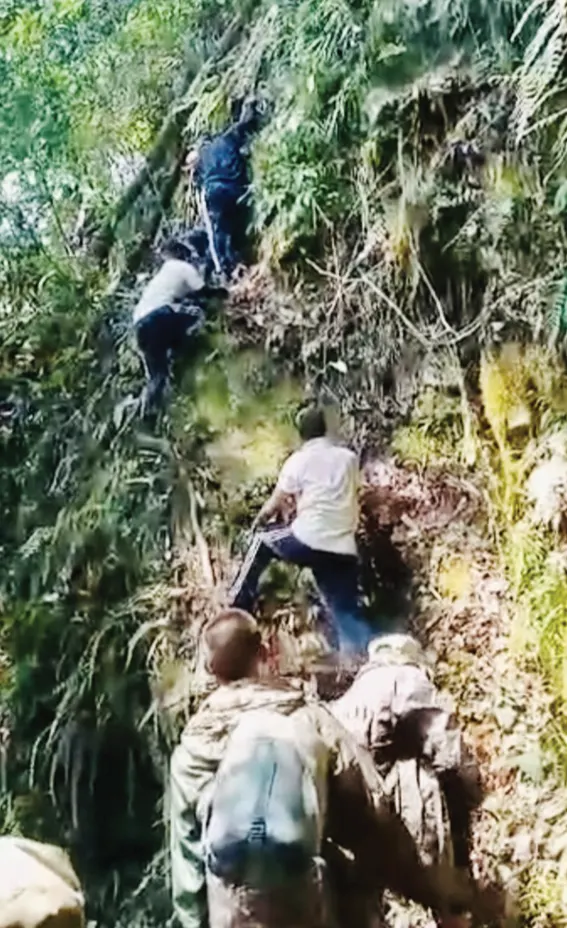[ Niyang Pertin ]
BOLENG, 18 Apr: Traversing through tough and steep terrains of the Himalayan mountains, navigating dense jungles, crossing traditional hanging bridges and setting up camps in tents – the Siang district election machinery has to literally move mountains to conduct polls at the remotest and inaccessible places in the district, ensuring the ECI’s commitment that “no voter is left behind.”
Gate and Gasseng villages, falling under the Payum circle in Rumgong assembly constituencies, are two of the 25 polling stations in the district categorized as ‘Shadow Zones’ (i.e., areas that have no mobile or internet or other public connectivity). There are 17 such polling stations in Rumgong constituency and eight in Pangin constituency.
To overcome the predicament and establish direct communication with the district headquarters on the poll day, where bi-hourly voting data is to be relayed, the election machinery has taken up the initiative of establishing VHF/HF (Very High Frequency/High Frequency) stations, thereby ensuring communication coverage through wireless walkie-talkies.
As a testament to human fortitude, two signal-testing teams led by Siang police accompanied by recruit constables and porters, trekked for three days straight to Gasseng and Gate villages, situated 147 km and 153 km from the district headquarters respectively. The last vehicle point is at Molo village. From thereon, Gasseng and Gate is a treacherous foot trek of 45 km and 50 km respectively. This is the same foot trek that would be undertaken by the polling teams as well.
Led by head constable Daniel Darang and Geny Bam, the teams reached Gaseng on 14 April after a 12-hour foot march from Molo village. The team then marched ahead to Gate on 15 April, and the journey culminated back in Molo on 16 April.
The signal trial of the HF sets established at Gasseng and Gate polling stations has been successfully conducted. This now enables direct communication between the polling stations and the District Control Room at Boleng, the district headquarters.
“Scaling high peaks and narrow footpaths for three days straight, the extremely difficult and dangerous route truly tested our physical and mental tenacity. However, I am glad that our endeavor will yield positive results for these two villages and for the electoral process,” Darang said.
Commending the spirit of the team, Siang DSP Sange Tenzin said, “The electoral process has become increasingly technology-driven. The absence of mobile and internet connectivity renders communication nearly impossible. This is an initiative to bridge the communication gap.”
The teams consisted of RC Kamnyai Suyang, RC Wakap Ketok, WC Pulay Hakhun, WC Yowa Begi, RC Gekto Tangu, RC Mathey Lipo, RC Kaling Taten, and RC Jhon Palon, accompanied by porters Tayi Tayor and Tamanag Yaying.
Established in 1963, Payum is one of the oldest circles in the state but is yet to be connected by a motorable road. Efforts through the Central Road & Infrastructure Fund for constructing roads from Pagak village (in Kaying circle) to Bogu (in Payum circle) to link Bille, Payum, Mega, Gaming, Bogu, Gaseng and Gate villages and the proposed 72-km Bille-Migging road would also connect Payum circle with Migging circle of Upper Siang district.
The polling teams for Gasseng and Gate polling stations have already been dispatched along with polling materials, including EVMs and VVPATs. (The writer is Pangin CO-cum-DIRPO in charge)



